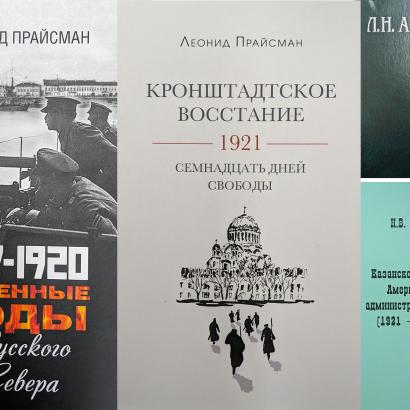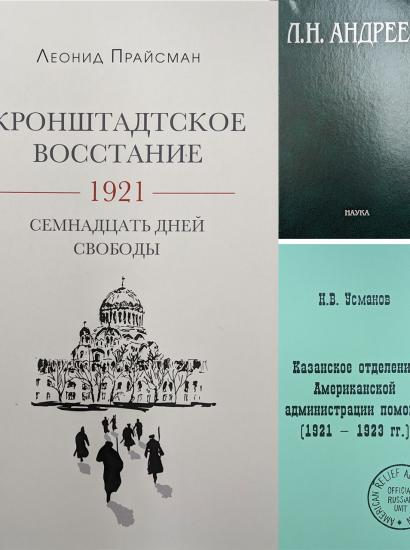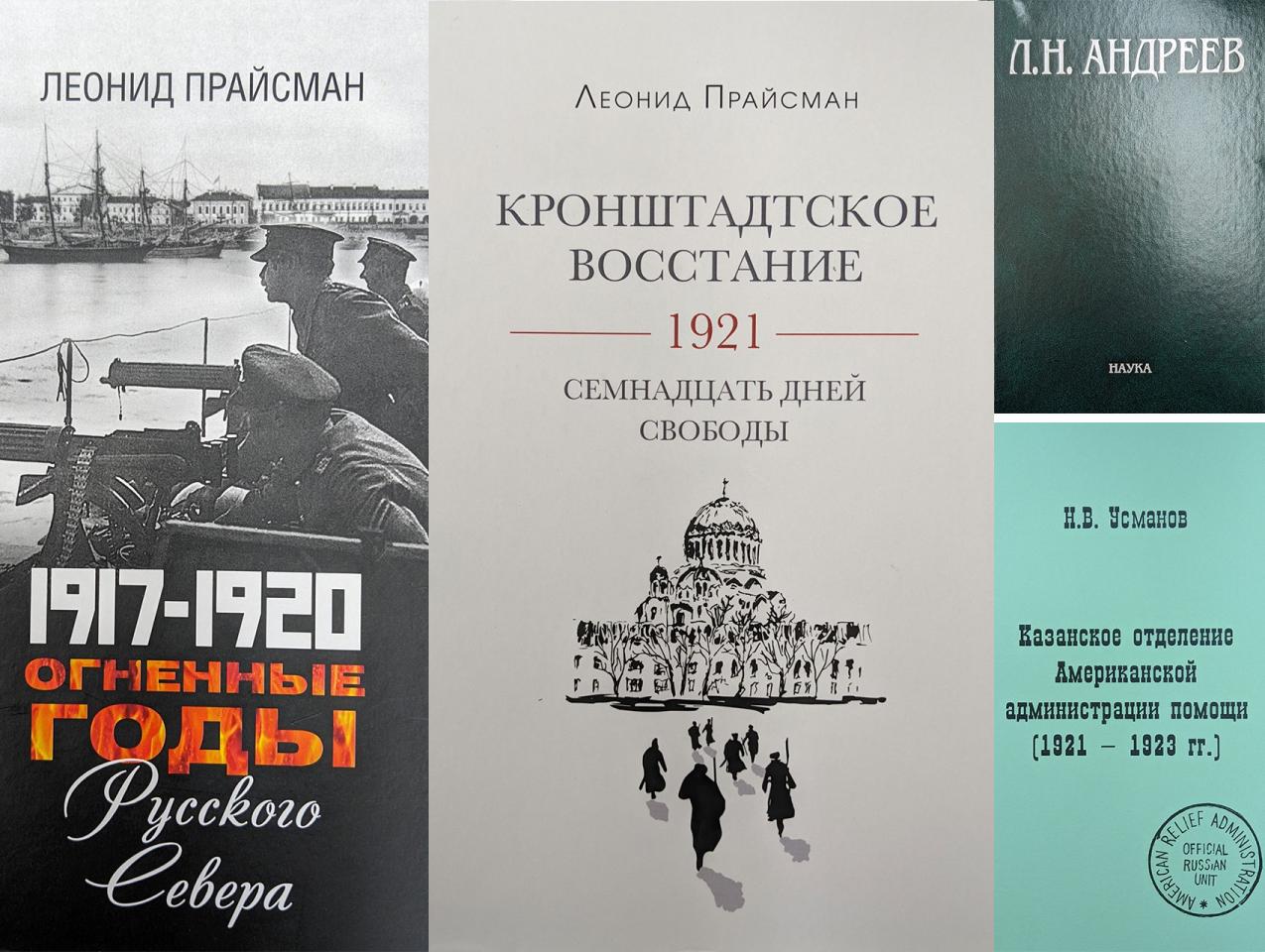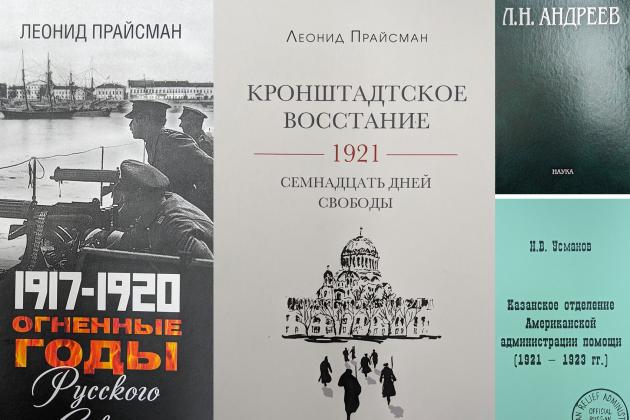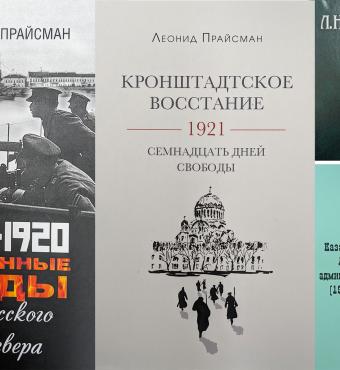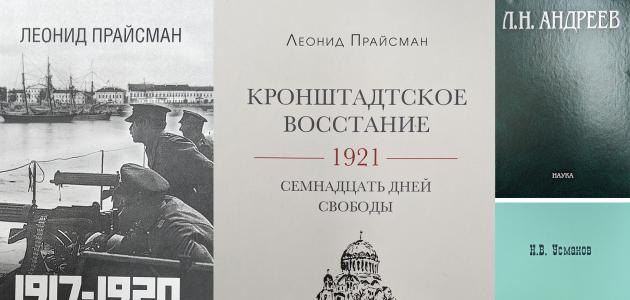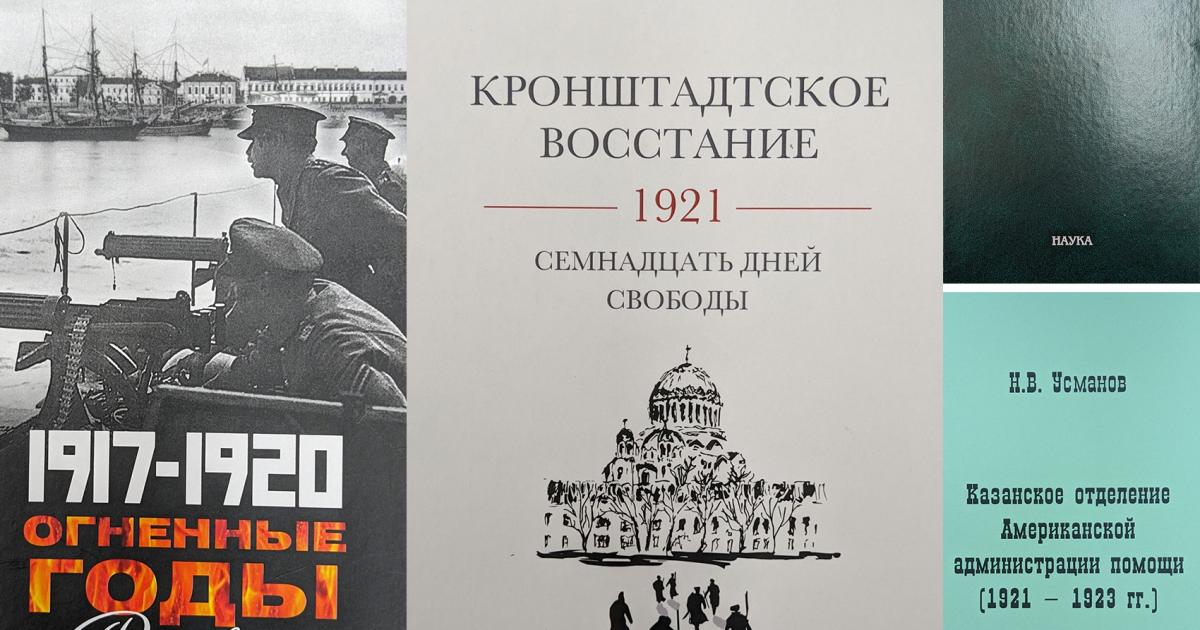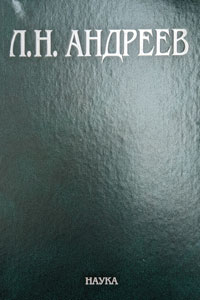
Four books based on collections in the Hoover Institution Library & Archives published in recent years offer insights into Russian history from 1908 to the early 1920s.

The seventh volume of Leonid Andreyev’s complete works (L.N. Andreev, Polnoe sobranie sochinenii), published in Moscow in 2022, presents the writer’s prose works created between 1908 and 1910, primarily short stories and plays. Many of these are held in three collections found in the Hoover Institution Library & Archives: the Boris Nicolaevsky collection (with a series devoted specifically to Andreyev), the Leonid Andreyev miscellaneous papers, and the Olga Carlisle papers (Carlisle, a well-known writer and editor in her own right, is Leonid Andreyev’s granddaughter). Previous volumes also drew heavily on Library & Archives collections, as will the volumes to follow (Andreyev was a prolific author who died in 1919).

Leonid Praisman’s Kronshtadskoe vosstanie 1921: semnadtsat’ dnei svobody [The Kronstadt Uprising of 1921: Seventeen Days of Freedom], published in St. Petersburg in 2022, chronicles the story of a major uprising led by Soviet sailors in Kronstadt, the naval base of the Baltic fleet of St. Petersburg, in February to March 1921. The uprising, caused by harsh economic and social conditions in Soviet Russia, began as a mutiny, but quickly developed into a major challenge to the supposed “worker’s and peasant’s government” of the Bolsheviks by sailors and the fortress garrison, who largely came of peasant and worker stock. For this reason, the Soviet government strove to brutally suppress the uprising before it could develop further and spread to the mainland. Historians still debate the extent to which the Kronstadt uprising led to the establishment of Lenin’s New Economic Policy, which relaxed the economic and social straightjacket the Bolsheviks had instituted under the previous policy of War Communism. Praisman made extensive use of the Sergei Mel’gunov papers at the Library & Archives in researching this book.
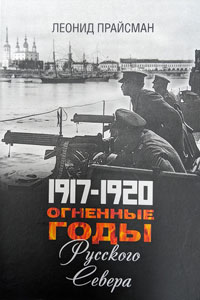
Previously, Leonid Praisman had written 1917–1920: ognennye gody russkogo Severa [1917–1920: Fiery Years of the Russian North], published in St. Petersburg in 2019. This book covers the years of the Russian Civil War in the far northern Arctic regions of European Russia, particularly the towns of Arkhangelsk and Murmansk and their environs. It is unlikely there would have been much battle action in the northern reaches of Russia had it not been for the vast supplies of war material shipped to these ports by the Allied and United States governments during the First World War. When the Bolsheviks seized power in Russia, the Allies and the United States sent troops to guard these supplies, fearing that they might fall into German hands. These troops became the nucleus of intervention forces, around which anti-Bolshevik, or “White” – in opposition to “Red” – forces coalesced. Thus, were sown the seeds of civil war in this remote region. The Allied and US forces were evacuated in 1919, and the remaining White forces, outnumbered and with limited supplies and options, were overrun early in 1920. The Hoover Institution’s unparalleled collections on the Russian Civil War form the basis for Praisman’s fascinating study, particularly the papers of Evgenii Miller (who commanded the White Northern front), generals Nikolai Golovin, Boris Gerua (Heroys) and others.
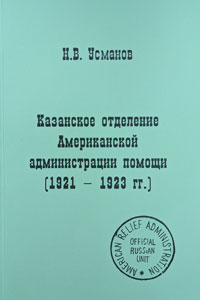
Nail Usmanov’s Kazanskoe otdelenie Amerikanskoi administratsii pomoshchi (1921–1923 gg.) [The Kazan Section of the American Relief Administration (1921-1923)] was published in Birsk in 2022 and examines the work of the American Relief Administration (ARA) in one of the regions of its activity: Kazan and its environs. Kazan, located on the Volga River, was at the epicenter of the famine of 1921–1923. It was also the capital of the Tatar ethnic minority in Soviet Russia. These factors combine to make the story of famine aid in this region particularly nuanced. Aside from the ARA Russian operational records housed at the Library & Archives, Usmanov made extensive use of local archives and the regional press, showing the complex relationship between the American relief operation, Soviet local and regional authorities, and the population of the region. One of the most interesting chapters deals with the attention the Soviet secret police (Cheka) paid to the relief workers, both Americans and locals who worked for the ARA. Usmanov gives the ARA its due and praises its aid as very significant in bringing the entire country out of its famine-induced crisis.





